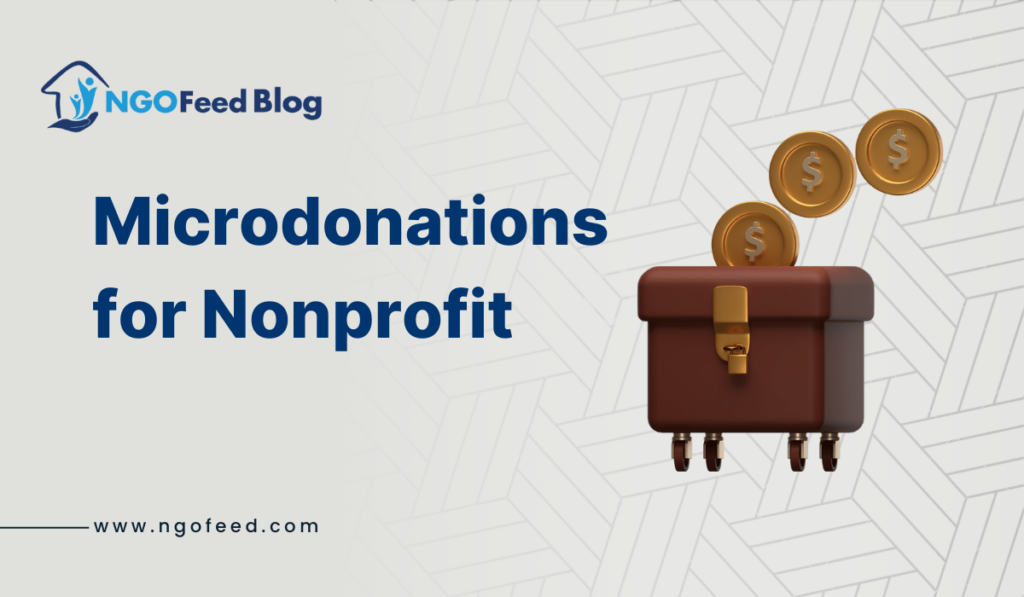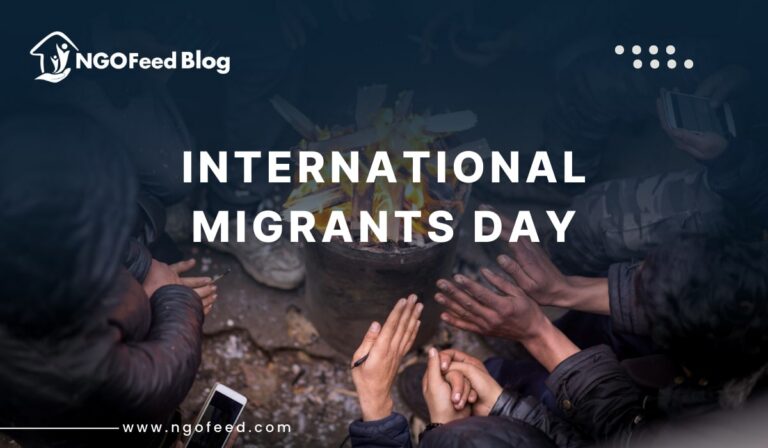Microdonations for Nonprofits: Large-scale philanthropy frequently receives more attention in society than micro-donation efforts, which should not be the case. Fractional contributions including pennies as well as single dollars or the residual change from transactions collectively generate meaningful changes when combined through pooled donations. Micro-donations operate through collective giving which confirms that multiple small donations can produce substantial results throughout time.
Nonprofits along with crowdfunding campaigns and social initiatives obtain exceptional success through this approach since they build a support base through grassroots donor networks. Digital payment platforms together with mobile apps along with automated donation systems allow people to donate money easily thus expanding rower access to philanthropy.
Many modest payments come together through volume to provide essential funding for life-saving healthcare treatments, educational initiatives, disaster response efforts, and other programs. People without enough financial resources to accomplish large contributions can utilize micro-donations to support their preferred causes. Philanthropy experiences a transformation through the democratic approach to giving because it now welcomes participation from individuals regardless of their financial means into meaningful change. This article examines the operation of micro-donations and their benefits alongside their rising significance in forming a more liberal societal structure.
Table of Contents
What are Microdonations?
Definition and Key Features
Each person who supports charitable groups through small monetary donations makes micro-donations that amount to cents or dollars. Large-scale donations follow a different approach because micro-contributions reach their maximum impact when many small amounts merge.
Key features of microdonations for nonprofits include:
- The donation process does not require any financial requirements because it welcomes everyone equally.
- Many donations aggregated together allow projects that require large financial support to become feasible.
- Modern technology enables users through digital wallets and mobile apps with automated payment systems to donate money with ease.
- Customers can establish recurring payments to various platforms through subscription programs for sustainable microdonations.
- Social media tools provide a platform for communities to join forces through social media fundraising together with crowdsourcing donations.
Also Read: How to Use Content Marketing to Tell Your Nonprofit Story and Drive Engagement
Benefits of Microdonations for Nonprofits
1. Accessibility and Inclusivity in Philanthropy
Through micro-donations, society can overcome monetary obstacles so that everyone regardless of their financial capacity becomes part of charitable giving. Small donors find micro-donations simple because these donations enable them to contribute amounts ranging from pennies to dollars. Philanthropic initiatives through microdonations provide accessibility for global communities making it possible for all social groups to join forces for positive change. Digital payment platforms combined with social media provide people from all regions with convenient possibilities to donate funds.
2. Encouraging Long-Term Donor Engagement
The modest financial threshold of micro-donating makes people donate again as they perceive it as requiring minimal effort. Nonprofits as well as charities successfully secure continuous funding streams through subscription programs that enable donors to make recurring minimal payments. The regular donation structure develops donor commitment while establishing enduring partnerships between nonprofits and their donor base. Ongoing microdonations maintain donor connection to the cause which in turn makes them more likely to both promote it and spread news about it.
Also Read: Tips for Building Long-Term Relationships with Donors
3. Supporting Nonprofits and Grassroots Movements
Small grassroots organizations together with nonprofits benefit from micro-donations because they generate a dependable income stream that fits their limited fundraising ability. Traditional fundraising approaches request major promotional investments and outreach networks yet micro-donations success depends on social sharing along with community membership and engagement. These organizations maintain their projects through crowdfunding campaigns and round-up donation features and social media fundraising which allows them to fulfill their missions beyond major donor support.
The strategic combination of micro-sized charitable donations enables radical change in how charities, nonprofits, and community-based organizations gather donations leading to more enduring and open funding possibilities.
Also Read: Reputation Management for NGOs
The Role of Technology in Microdonations for Nonprofits
The adoption of technology created micro-donations into a method of financial aid that operates smoothly and grows in scale. The implementation of digital tools with automated systems enables simple donor contributions thus creating more usable philanthropic funding.
1. Digital Payment Platforms and Apps
Digital payment methods today provide donors both safety and ease of use in addition to speed in making micro-donations. Nonprofit organizations merge donation portals into their operations through payment platforms that include PayPal, Google Pay, and Apple Pay among others.
Also Read: How to Build a Digital Fundraising Strategy for NGOs That Works?
- PayPal, Google Pay, and Apple Pay: Enable one-click donations for users worldwide.
- Venmo together with Cash App provides two applications dedicated to person-to-person gifting both for donations and receiving funds easily.
- Users can provide donations through donation buttons found on Facebook and Instagram along with YouTube.
- The crowdfunding websites GoFundMe along with Patreon and GlobalGiving provide an opportunity for massive numbers of small donors to collaborate on funding a particular cause.
- Users can access several donation options through these platforms which enables nonprofits to reach more potential donors comfortably.
2. Round-Up Donation Features and Subscription-Based Giving
- New donation systems use automation to develop systems that promote steady monetary contributions from donors.
- Through Acorns and GiveTide digital platforms, users can enable automatic rounding of their transaction amounts to the next dollar for a charitable donation to their selected nonprofit. Users can establish donation behavior through this effortless process which integrates into daily spending routines.
- The donation platforms Patreon and Donorbox allow people to establish automatic small monetary contributions through subscriptions starting at $1 or $5 monthly. This funding approach gives continuous financial support to NGOs without requiring heavy donor obligations.
- Through technological enhancements, micro-donations establish effortless sustainability in donations that enable NGOs to draw maximum funding without causing excessive donor responsibility.
Also Read: How to Build a Strong Email Marketing Strategy for Your Nonprofit?
Strategies to Maximize Microdonations for Nonprofits
When NGOs and charities want to achieve better results from micro-donations they must establish strategic methods that increase donor participation while also fostering donor engagement and extended retention. Here are some key strategies:
1. Leverage Social Media and Crowdfunding Platforms
- Foundations should rely on Facebook together with Instagram YouTube and TikTok to broadcast their moving donation requests.
- Nonprofit organizations should use crowdfunding websites GoFundMe and GlobalGiving alongside the Patreon platform to gain a wider engagement base.
- Questions about donations should be integrated into posts across all social media platforms as well as into streaming content to enable effortless donations.
Also Read: How Digital Presence is Bridging the Gap Between Urban and Rural NGOs
2. Engage Donors Through Storytelling
- Display honest impact examples that will help donors form emotional bonds with the organization.
- Graphic presentations with real donor feedback and short video sequences show donors that daily donations become substantial funds for the cause.
- Present open disclosure about the specific ways donations get employed.
3. Implement Recurring Microdonation Models
- Utilize Donorbox or Patreon to create regular microdonation subscription agreements for donors.
- You should provide special features to ongoing contributors such as platform-specific content as well as donor recognition programs.
- A system should send automated messages to donors while providing appreciative features to sustain relationship connection.
4. The Non-Profit should activate Round-Up and Passive Giving Features.
- The platform should team up with fintech apps that enable users to boost their transactions to a whole dollar amount and donate whatever extra amount.
- Strategic collaboration with commercial entities enables businesses to match customer-made small donations during the checkout process.
Also Read: Financial Management Tips for NGOs
5. Make Giving Effortless and Rewarding
- The donation process should include one-touch payment features enabled for PayPal, Google Pay, and Apple Pay.
- The donation process should include achievement systems together with rewards like badges and leaderboard rankings.
- Donors can join referral programs to receive benefits from bringing additional donors to the organization.
Strategies implemented by NGOs lead to higher donor involvement while creating lasting financial backing which maximizes the effect of small donations.
How Microdonations Work for NGOs
Small periodic donations from numerous donors allow Microdonations for Nonprofits to develop a continued interest in fundraising through micro-donations. Here’s how they work:
1. Digital Payment Platforms & Apps
Non-governmental organizations make micro-donations accessible across web portals through their applications and through popular payment providers such as PayPal, Venmo, and Google Pay. The minimum donation amount starts at a few cents while donors can also decide to round their payment transactions upward for charity.
Also Read: How to Choose the Best Crowdfunding Website
2. Round-Up Donations
International organizations team up with money management apps that enable users to make small add-ons to their buying transactions that automatically transfer the difference to charities. Donors receive automatic continuous financial backing from micro-donations that cause minimal impact on their financial resources.
3. Crowdfunding Campaigns
The platforms GoFundMe, Kickstarter, and GlobalGiving allow NGOs to launch micro-donation campaigns which enable thousands of backers to fund projects at low amounts.
4. Social Media & Peer-to-Peer Fundraising
Available social media platforms provide NGOs with features that let their supporters propagate micro-donation drives to their networks. Organizations benefit from social media fundraising tools such as Facebook Fundraisers YouTube’s “Donate”-button and Instagram donation stickers which extend their outreach potential.
Also Read: How to Start a Marketing Campaign for Nonprofits
5. Subscription-Based Microdonations
NGOs in India create regular micro-donation programs that permit donors to provide small monthly payments between one dollar and five dollars each month. Constant funding enters into the system while showing low requirements to donors.
Thanks to these strategies NGOs boost their donor reach leading to sustained monetary support along with enhanced accessibility of philanthropic efforts for all members of society.










